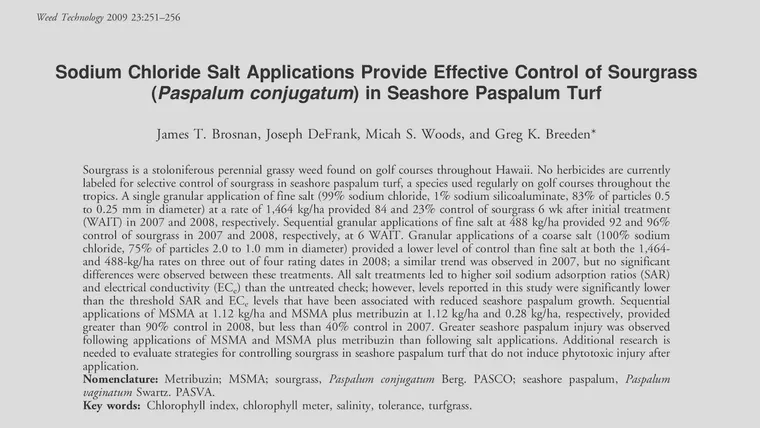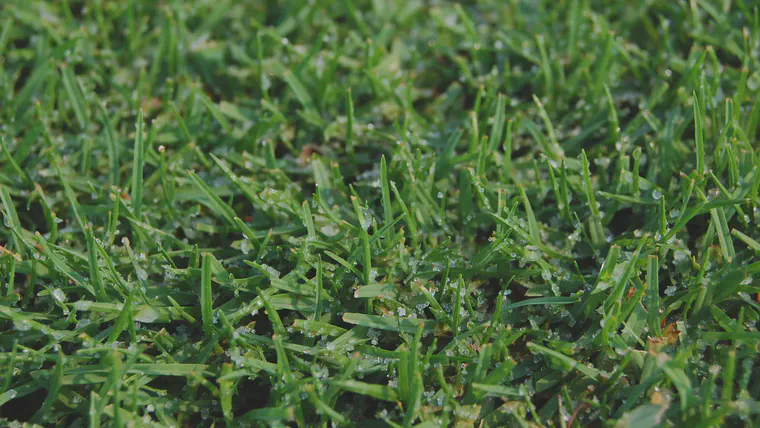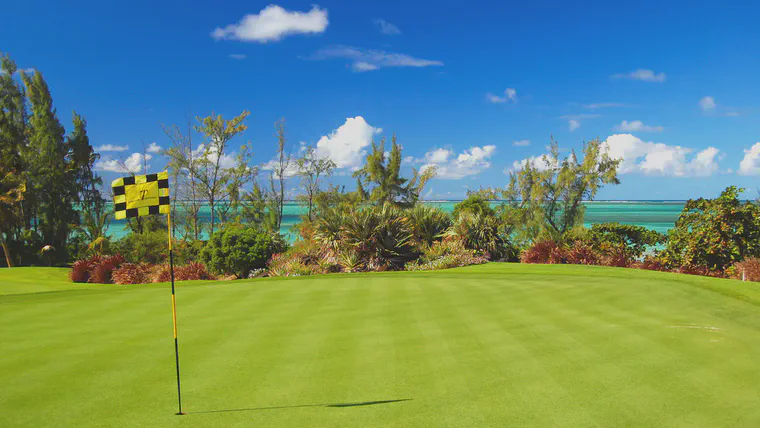Sodium chloride for weed control

Another article about sodium chloride applications as a method of weed control in seashore paspalum has been published in Weed Technology. This research was done in Hawaii by Dr. Jim Brosnan, and I did some additional testing in Thailand and helped with the paper entitled Sodium Chloride Salt Applications Provide Effective Control of Sourgrass (Paspalum conjugatum) in Seashore Paspalum Turf.
Granular applications of sodium chloride at a rate of about 50 g m-2 can cause severe damage to many weeds without causing phytotoxicity to seashore paspalum. In our research at Thailand, we first wet the leaves of the grass, then apply granular sodium chloride (table salt) and allow it to sit on the leaves of the grass.
Because the leaves are wet, the salt will stick to leaves, as shown below, with salt applied to seashore paspalum (variety Salam) mowed at 15 mm. In our experiments, we see no phytotoxicity to the seashore paspalum, but the same rate of sodium chloride applied to bermudagrass or carpetgrass (Axonopus compressus) or to some broadleaf weeds will cause severe phytotoxicity or plant death.

The photo above shows sodium chloride crystals sticking to the wet leaves of a seashore paspalum fairway turf. If salt is used to control weeds in seashore paspalum turf, I think it will work best if applied when the weeds are still small. If weeds are allowed to proliferate, and sodium chloride is used to control the larger patches of weeds, then unsightly yellow patches will occur all over the turf.
As with any weed control program, it is important to catch the weeds early. When I wrote this post, I was reminded of a visit to Mauritius and the Le Touessrok Golf Course at Ile aux Cerfs (see below); this is a seashore paspalum golf course where salt was regularly used to control bermudagrass (Cynodon spp.), St. Augustine grass (Stenotaphrum secundatum), and broadleaf weeds from encroaching into the seashore paspalum turf.

One thing to remember of course is that too much sodium in the soil can cause problems with soil structure in clayey or silty soils. Sodium chloride applications may work best on sandy soils, where there is little chance of any soil structural problems.